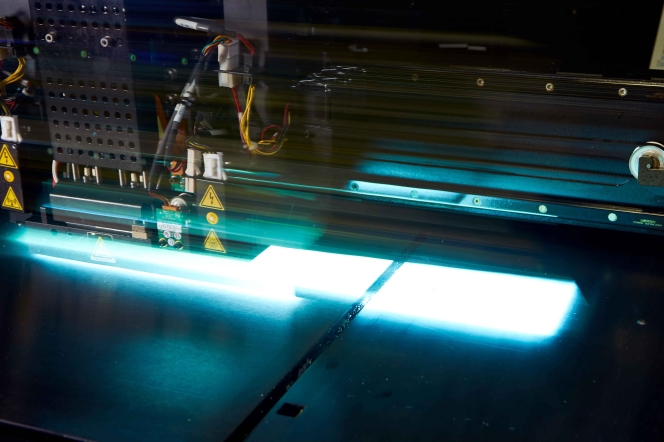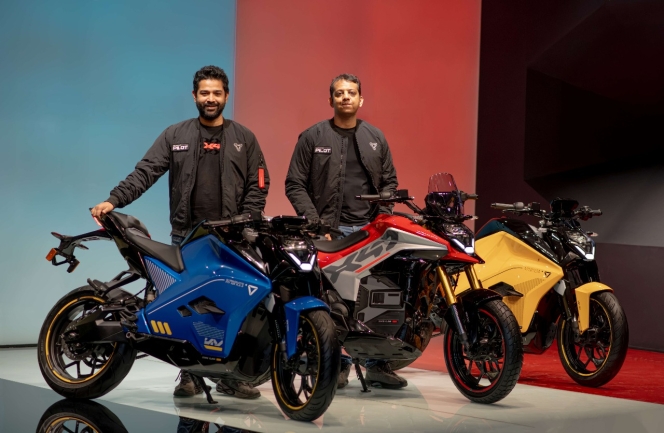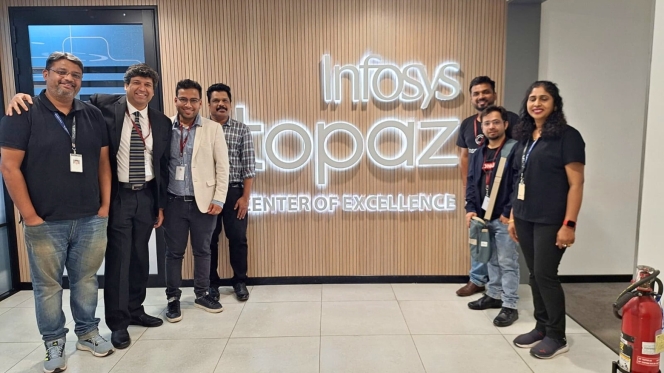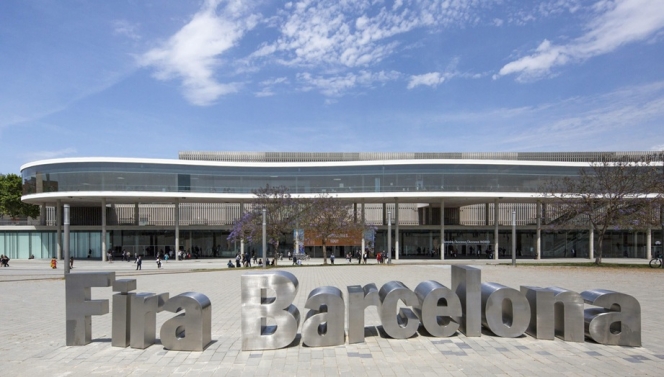Stratasys Supports To Transform Indian Manufacturing: Rajiv Bajaj
- By 0
- February 04, 2020

Stratasys, a global leader in additive manufacturing or 3D printing technology, helps Indian aerospace, automotive, healthcare and consumer products industries design and make prototypes, manufacturing tools, and production parts faster and cost effectively.
Several OEMs and Tier-1 companies in these industry segments are its customers who want high value products at very reasonable prices. In an interaction with T Murrali of this publication, Rajiv Bajaj, Managing Director, Stratasys India and South East Asia, said, “We are changing the game by giving industrial production-grade machines at affordable prices. We have a lot of takers for them across industries in the Tier-2& 3 cities also.” Edited excerpts:
Q: In India, is additive manufacturing still confined to R&D for making prototypes? What is the next step in the automotive sector?
Bajaj: The car companies we have in India are globally competitive, keeping pace with what is happening around the world. The differentiation we see as a technology provider is the level of technology adoption by the local OEMs. Similar-sized OEMs elsewhere in the world will have a series of our machines whereas in India they are just 1 or 2 each, most of them with the auto OEMs. It also has to do with the technology adoption rate and the trend of product development and differentiation which came in rather late.
Secondly, prototyping is a well documented area; people use it day in and day out. Companies like Honda, that do only manufacturing in India, are adopting it for their jigs and fixtures. The third stage we look at is personalisation where one can use the 3D printed part in a portion of the vehicle, which has been done with BMW MINI, and Daihatsu in Japan. We don’t have any use case in India as yet. We are looking at possibilities here.
Q: Are there some applications where it can be used?
Bajaj: Now we are talking about not just back-end or R&D use but actual customer experience. There we are giving tooled-up parts with multiple finishes. There are finite possibilities with the new numbers and quality of parts being manufactured. 3D is also used as a marketing tool. Typically, people look at it as a device to save money or time as this is a revenue generation tool.
Q: So even if you make 10,000 parts, each one can be customised?
Bajaj: Yes, absolutely; it’s mass customisation.
Q: Do you see opportunity globally and in India to replace traditional manufacturing by 3D, and to what extent?
Bajaj: There is no simple yes or no answer to this. It involves a deep understanding of how the two processes work. If volumes are a few thousands, yes; but if it is in lakhs, then maybe not. The most intelligent organisations would be the ones who would use a mix-and-match of this technology. Additive doesn’t mean it should remove subtractive. Intelligence lies in knowing when to use additive and where to leverage subtractive, and vice-versa. Combining these two will make for a very efficient organisation.
Q: Will this find a key role in low volume parts?
Bajaj: Yes, as well as complicated parts and in the aftermarket for different models. Even enthusiasts like Jay Leno will find a use for this. In fact Leno has bought a 3D printer from Stratasys to make parts for his collection of vintage cars. It’s a useful tool for motor enthusiasts to make parts that are not available in the market.
Q: Do you see additive manufacturing for lightweighting?
Bajaj: Parts consolidation is a very direct outcome of 3D printing because, for example, it can print a chain with interlock whereas in the traditional process each part would be a separate entity. In an aerospace part we consolidated some 100 plus parts into one unit. In automotive, now many areas for this are emerging for limited production; mass production would take some more time but it will come. When we talk of lightweighting, making prototypes earlier was quite difficult but today with this technology we can make very complex prototypes and validate the design. Once it is validated it can use any method: for low volume additive, for high volume something else. That’s the advantage. Also, in assembly, we can check minute gaps in the line very accurately. Changes in tooling can be done immediately instead of waiting for a long period as customisation has to be done in the shortest period possible.
Q: Would this help reduce the number of iterations?
Bajaj: Actually I can do more iteration by trying out newer ideas. This will help enhance the quality level at the design stage itself. We have to find a balance between the additive and the subtractive.
Q: Would the customer complaints reduce when you make a product faster?
Bajaj: Obviously, as I am designing quality into the process and product from day one; it helps me take informed decisions. Basically, what the customer wants is a good, tangible product.
Q: What is the response you get from customers who have not taken up this technology as yet?
Bajaj: In today’s scenario there would be very few customers in the automotive supply chain who have not experimented with 3D printing. If they are not using it directly they are getting services done outside. The expectations from customers is different; some want better quality, some want it faster, some cheaper and so on. Most of them are experimenting so that this should become a part of their process.
Q: Are there other concerns than cost?
Bajaj: In India, cost is a big concern; customers want high value at the most reasonable price; they are not looking just for low cost. So there is pressure; that’s why a lot of innovation helps. A company cannot just copy paste; it has to innovate. In 2015 our lowest cost of the printer in FDM series was around INR 60 lakh. Today, we have given the same technology on a different platform for INR 15 lakh. That’s how we are changing the game, giving the same class of industrial production grade machines at an affordable price. This has found a lot of takers for us in the Tier-2&3 cities, not just automotive but across industries.
Q: There might be apprehension among your potential customers that if they buy a machine from you they would have to be wedded forever to your company to get the material. Is that true or will they be free to choose their own material from the market for use?
Bajaj: For most of our technologies it is true but we are working on a new technology called SLA which is our only platform where the consumer can buy material elsewhere. The problems with 3D printing are many. Let us say if you make your material open and then the customer comes and says the parts are not printing correctly; then where do you fix the blame? That becomes a big problem. The reason why we keep it to us is not because we want to charge customers more, but because we want to give them 100 percent accurate results all the time. Predictability and repeatability are problems that 3D printers at entry level are facing every day. By controlling the oven temperature and the material properties we are able to achieve 100 percent accuracy. When companies like Maruti tell us there are some challenges, we work with them to sort it out.
It is like when the customer buys a car and goes to the spurious market to get parts. When the vehicle fails they come and complain to us. We check the car and tell them the company is not responsible for whatever parts the customer fits in. Even insurance companies do not entertain such claims. If you want consistent quality and most desirable product performance you will have to stick to some standards.
Q: Do you see Stratasys to become even a supplier to vehicle manufacturers or Tier-1s?
Bajaj: It is not done in India as yet but globally we do run Service Bureaus. The BMW MINI project is all done by our Bureaus.
Q: Is this like software as a service where they can use your facility?
Bajaj: Yes, they have to just give us the software data and we will be able to print it. But that is not the real intelligence of the service bureau. The services we provide are very high-end; redesigning the entire thing, adding more colour variants, giving a new look to the car. These are the kind of services we provide where 3D printing is a part of the process. We take into account all the special requirements the customer wants. We have done complex projects in India and our overseas offices as a service.
Q: Which are the markets that are very attractive, where you have more inroads as of now? Going forward, how will it be?
Bajaj: Automotive is our sweet spot, globally (around 25 percent) and in India (30 percent). I see it as a major place for expansion because compared to global standards the technology adoption with these companies is very low. I believe if they have to compete in testing times like this there is no other way than to come out with products faster and cheaper. Technologies like Stratasys 3D printing are tailor-made for this. Despite the slowdown we are very bullish about the automotive market because of the lack of penetration in it. It’s a technology life cycle, similar to the software industry where the cycle came from the US and went on to Europe and to Asia before coming to India.
Q: How do you compare with aviation as you are the only one certified by the aviation industry?
Bajaj: For aviation, we are limited to plastics at this point in time so the parts made by us are more suitable for the cabin interior. India is more about defence aviation where the aircraft interior is not that critical. While HAL, DRDL, etc are all using our technology, mass proliferation would occur when companies like Boeing and Airbus have their complete setup in India. We need civil aircraft to be manufactured in India to see that kind of growth; there are none at present.
Q: For automotive, what are the key drivers of growth globally and in India?
Bajaj: One is the quest for innovation through rapid prototyping. Two, the product development cycle time has reduced by 50 percent in the last four years. If a new platform time was 3 years earlier, today it is under 18 months. In the past two years, any automotive company that has not come up with newer models at a faster pace has not survived. To keep the momentum going in the market they have to come up with new products. If they have the right product at the right price in India their business will certainly grow. (MT)
BOX
User Forum
The 3rd edition of Stratasys India User Forum in Bengaluru recently had participation from over 620 industry leaders and end-users. Organised by Stratasys, a global leader in 3D printing and Additive Manufacturing (AM), the Forum was a platform for professionals to exchange views on the latest 3D printing trends, applications, and the best practices across key sectors in India.
Michael Agam, President, South Asia, Stratasys, said the User Forum brought together several leading brands such as Maruti Suzuki, Ashok Leyland and Honda Cars in the Indian ecosystem, that have used Stratasys’ products to innovate. This reiterates why India is a key market for the company.
Saurabh Singh, Head of Design Studio at Maruti Suzuki India Ltd, highlighted how the brand has been able to leverage 3D printing to provide high quality, ergonomically suited and distinctly personalized offerings, thereby enhancing the overall customer experience.
Sundaresan, Vice-President, Electric Vehicles and eMobility Solutions, Ashok Leyland, said that AM helped the company save about 14,138 days of hour-utilization and nearly INR 74 lakh in manufacturing costs. He said Ashok Leyland made clutch housing using AM to carry out fitment checks and it helped to contain the time to three days against close to 60 days in the conventional method. AM helped also to keep the time schedules for the development of blower cover and meet the CMVR regulations. The company made prototypes and parts for the initial production lot. The whole exercise was completed in a couple of days as compared to 90 days in the conventional method. Similarly, the three-axis intake pipe was made in a day as opposed to the usual three months. It also made a scaled concept of the seven-speed gearbox having geometric complexity. For electric vehicles the company made traction motor stator sector in AM, which helped in physically measuring the slot-fill, evaluate ease of winding and measure external portions of end-winding. “For smaller volumes also AM is economical. For advanced mobility it plays a key role in the combustion chamber”, Sundaresan added.
Bhushan Chandna, Manager, Business Excellence, Honda Cars, explained how the brand has spearheaded the use of additive manufacturing in the auto sector, especially with the use of 3D-printed jigs and fixtures. (MT)
Neusoft And MapmyIndia Partner For Intelligent Mobility Solutions
- By MT Bureau
- December 06, 2025

Chinese technology company Neusoft Corporation and Mappls MapmyIndia have signed a Memorandum of Understanding (MoU) to leverage their strengths in software and data resources to collaborate deeply.
The companies will engage in joint technological development, ecosystem collaboration and resource integration to provide navigation products and intelligent mobility solutions tailored to localised needs in emerging markets such as Southeast Asia and India.
The partnership is a response to the fact that while global auto brands are expanding into Southeast Asia and India, they face challenges in these regions due to complex road conditions, unique traffic rules, extensive addressing systems and high localisation adaptation costs. These issues limit the ability of automakers to deliver a complete intelligent user experience.
Under the collaboration, Neusoft will adopt its OneCoreGo Global Intelligent Mobility Solution 6.0 Plus as the core technology carrier, deeply integrating MapmyIndia's map data, real-time traffic information and multi-dimensional value-added services. MapmyIndia is noted as the largest local mapping company in India, holding more than 90 percent market share in in-vehicle navigation.
The integration is intended to strengthen a full capability loop of ‘navigation + payment + interaction + connectivity + operations’.
Through API integration and technological convergence, the two parties will jointly develop navigation products and mobility solutions highly adapted to Southeast Asia, India and similar regional markets. These solutions will deliver precise route planning and real-time traffic guidance, address local user needs and continuously enhance product experience and scenario-based services. This will help automotive partners rapidly launch intelligent vehicle models with competitiveness in local markets.
The partnership enables Neusoft to combine the global end-to-end strengths of its solution with localised ecosystem resources, paving the ‘last mile’ for automakers entering the Southeast Asian and Indian markets and delivering comprehensive intelligent mobility experiences.
- Ultraviolette Automotive
- Zoho Corporation
- Lingotto
- F77
- X-47
- Shockwave
- Tesseract
- Narayan Subramaniam
- Niraj Rajmohan
Ultraviolette Secures $45 Million Growth Capital From Zoho And Lingotto
- By MT Bureau
- December 04, 2025

Bengaluru-based electric vehicle maker Ultraviolette Automotive has secured USD 45 million from Zoho Corporation and Lingotto, one of Europe's investment management companies as part of its ongoing Series E investment round.
The investment from Zoho Corporation was led by Sridhar Vembu, Mani Vembu and Kumar Vembu.
This growth capital will accelerate the domestic and international scale-up of current products F77 and X-47, as well as future product platforms Shockwave and Tesseract.
Ultraviolette has built a design and technology-led enterprise with the F77 and the recently launched X-47.
The company has expanded to 30 cities across India in a short span of 12 months and is expanding to 100 cities by mid-2026. The F77 motorcycles were recently launched in the United Kingdom, bringing Ultraviolette's presence to 12 countries across Europe.
Narayan Subramaniam, Co-Founder & CEO, Ultraviolette Automotive, said, “We are glad to announce our Series E investment from Zoho and Lingotto. Lingotto's legacy of backing iconic performance and mobility brands, combined with Zoho's long-term commitment to fostering cutting-edge Indian innovation, aligns perfectly with Ultraviolette's mission to build category-defining electric mobility solutions for India and global markets.”
Niraj Rajmohan, CTO & Co-Founder, Ultraviolette, said, "With the ongoing Series E investments, we are doubling down on growth and expanding our production to meet increasing demand. Our focus is on advancing breakthrough battery technology, elevating performance capabilities and expanding production to support upcoming product platforms. This investment will accelerate our journey towards scaling into India and global markets."
Disseqt AI Partners Tata Technologies And Infosys For Agentic AI Adoption
- By MT Bureau
- December 04, 2025

Agentic AI platform Disseqt AI has announced a partnership with Tata Technologies and Infosys. As per the agreement, Disseqt AI will assist both companies' IT and DevOps teams in developing and fast-tracking the production of tailored Agentic AI applications for automobile and FinTech companies globally.
The partnership aims to help auto and FinTech firms embrace customised Agentic AI faster and in a secure manner.
Disseqt AI, which has operations in Bengaluru, San Francisco and Dublin, provides an enterprise-grade platform for IT and DevOps teams. The company claims its platform cuts down Agentic AI testing and operations cost by 70 percent and improves productivity by up to 80 percent. The platform allows these teams to test, simulate and monitor their Agentic AI systems tailored across industries, ultimately enabling enterprises to operationalise tailored Agentic AI faster and at scale, without sacrificing ethics, governance and compliance.
Apoorva Kumar, Founder and CEO, Disseqt AI, said, “This is a landmark announcement for us as we further embed Disseqt into enterprise workflows for testing, simulation, monitoring and auditability purposes. We are already working closely with both Tata and Infosys on several projects and are proud to be part of their innovation initiatives”
Last month, Disseqt AI announced a strategic collaboration with HCLTech and Microsoft to guide financial services institutions with Agentic AI adoption.
Battery Passport Implementation Beyond EVs To Be Focus Of Barcelona Event
- By MT Bureau
- December 03, 2025

Battery and Energy Storage Europe has announced a programme focused on the EU Battery Passport, a regulatory milestone that becomes mandatory in February 2027. The Barcelona-based event will address the compliance gap for applications beyond the electric vehicle (EV) sector, which have dominated the conversation to date.
The event, taking place on 8th and 9th September 2026 at Fira de Barcelona's Gran Via venue, will focus on solutions and talks for applications that fall within the regulation's scope: stationary energy storage, industrial batteries, grid-scale systems, long-duration energy storage and emerging applications in aerospace, maritime and rail electrification.
With the February 2027 legal requirement date approaching, the programme will bring together industry leaders, technology providers, and policy experts to address the compliance challenges facing these diverse sectors.
The Battery Passport is a digital record documenting a battery's entire lifecycle, from raw material sourcing to production, performance and eventual recycling. From February 2027, it becomes mandatory for all rechargeable EV, industrial and LMT batteries over 2 kWh sold in the EU.
Linked via QR code, the passport will track each battery's complete lifecycle, including composition, carbon footprint and recycled content, fundamentally transforming supply chain transparency and sustainability practices across Europe.
The programme will explore implementation topics including digital infrastructure requirements, data management systems, supply chain integration, verification processes and recycling traceability.
Ken Davies, Conference Programme Director at Battery and Energy Storage Europe, said, "The Battery Passport represents one of the most significant regulatory shifts our industry has faced, yet many companies are still grappling with what implementation actually means for their operations. While the EV sector has dominated the conversation, there's a critical need to address how this regulation applies to stationary storage, industrial applications and the innovative battery technologies powering Europe's energy transition. With the clock ticking toward February 2027, Battery and Energy Storage Europe will shine a light on the practical implementation requirements for these often-overlooked sectors, connecting stakeholders with actionable solutions and bringing together the expertise, technology providers, and collaborative spirit needed to turn compliance into competitive advantage across the full spectrum of battery applications."





Comments (0)
ADD COMMENT